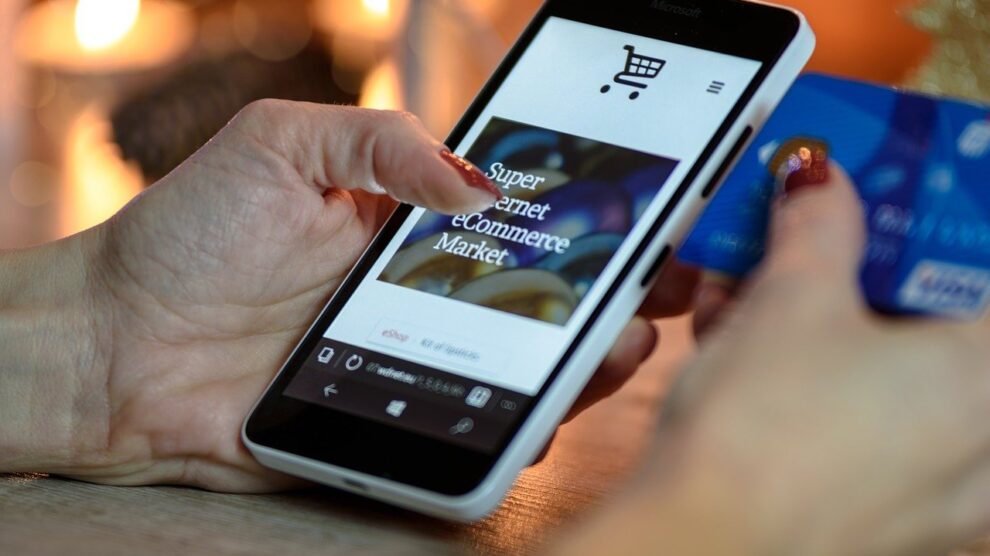How did stores change as technology improved? The newest technological advances in the retail industry have already transformed the entire shopping experience as we know it. In recent years, the share of consumers who prefer online shopping has reached 51% in the US, with the global value of e-commerce sales transactions surpassing $4 trillion following the Covid-19 outbreak. Moreover, the future of brick-and-mortar retail stores is already starting to be associated with technologies like robotics and extended reality.
But the most groundbreaking transformations are yet to come. Below is an overview of six technologies that will have a decisive impact on the future of retail in 2021 and beyond.
Ferocious Innovation: How Companies Adopt Tech Retail
First off, let’s take a closer look at how retailers are adopting emerging tech.Some companies are fast to embrace future disruptive technologies, while some are indecisive and reluctant to innovate. Needless to say, the former usually outpace their competitors by leveraging three key approaches that help them stay ahead of the curve.
First and foremost, they monitor the fast-changing tech landscape for emerging technologies that are about to hit the market. By keeping their finger on the pulse, such companies are ready to become the first ones to leverage the potential of technological advancements in retail.
Staying informed helps them to begin implementing these technologies as soon as they see that it’s about to become mainstream. IKEA, for example, has announced the launch of its first AR retail app shortly after iPhone 8 enhanced with AR technology was released. The app addresses the common pain point their customers face, and that is the inability to try the product before one actually buys it. The solution is to offer their customers the ability to see how the chosen furniture will fit into the interior of their home via a virtual representation.
Finally, these companies are ready to invest in innovations even if the initial revenues are not particularly impressive. What matters to them is the chance to start creating better experiences using new technologies. In other words, they are ready to put innovations and customer experience first, even if their investments don’t bring immediate profit.
Now, let’s get back to listing the technologies which are currently reshaping retail.
1. Robots and virtual assistants
Retail robotics is a fast-developing niche: robots in retail are acting as store assistants capable of handling most of the typical storeroom situations, emailing discounts and coupons, and contacting the right people when necessary. Retail robots are also used in warehouses in order to reduce the amount of physical labor, accelerate order fulfillment and make warehouse operations safer for workers.
2. IoT and Smart Equipment
By leveraging the internet of things, stores benefit in a number of ways. From tracking the states and expiration warranty dates of merchandise to ensuring that the optimal conditions for product storage and delivery are maintained. IoT in retail is doing a great job of streamlining retail operations. Powered by IoT, smart inventory systems using RFID chips and sensors are also effectively handling warehouse management, and extend as far as placing sensors on store shelves to track when the store runs out of merchandise.
3. Customer Chat Bots
In the Internet retail industry, chatbots have already become mainstream. In fact, half of the Fortune 5000 companies have been using AI-based chatbots for communicating with their customers, helping them resolve issues and answer frequently asked questions. Customers enjoy conversations with chatbots and find them less stressful and awkward.
4. Predictive Analytics (Big Data)
The use of big data analytics in retail is quite extensive – from marketing to delivery, big data is capable of improving every facet of retail operations. For example, shopping big data that customers leave as they purchase a product from an online store is a treasure trove of useful information about their demographics and shopping habits. This information can be used to offer personalized products and services, predict their future shopping patterns, and schedule supplies.
In inventory management, big data obtained by IoT devices and systems can be used for predictive maintenance of vehicles and warehouse equipment.
5. Extended Reality
Finally, if you want to explore retail technology, which is truly disruptive, virtual reality is the way to go. The advent of 5G Internet is bringing us accelerated connection speeds and will account for increased adoption of extended reality solutions. AR and VR are already enhancing the online shopping experience, enabling customers to virtually try on different outfits, or see how the furniture they buy will look in their home setting. Apparel brands like Tilly’s are also launching AR marketing campaigns to attract young customers.
6. Voice commerce
Voice shopping is also gaining wider acceptance now that the major tech brands have launched their proprietary voice assistants. Voice-enabled shopping is convenient in a number of ways: it allows users to shop on the go letting AI algorithms do the complicated work of selecting the right products and services. The main obstacle that now stands in the way is the lack of algorithms’ ability to interpret conversational speech, but voice recognition technology is increasingly getting more sophisticated. Right now, brands like Nike, Domino’s Pizza, Starbucks, and Walmart are pioneering voice-shopping, but the technology is currently available to small and medium size companies that strive to bring the shopping experience to an entirely new level.
Conclusion
The retail industry is inarguably among the first ones to embrace innovations on a major scale. From robots and IoT to complicated AI-driven voice shopping, retail tech is increasingly adopted not only by industry tycoons but also by SMB players. What stays relevant, however, is the need for reliable tech partnerships to help retailers bring their ideas to life and deliver on the promise of improving customer service and boosting sales. A trustworthy tech partner with the proven expertise in developing digital retail solutions can truly help companies gain a competitive edge.





